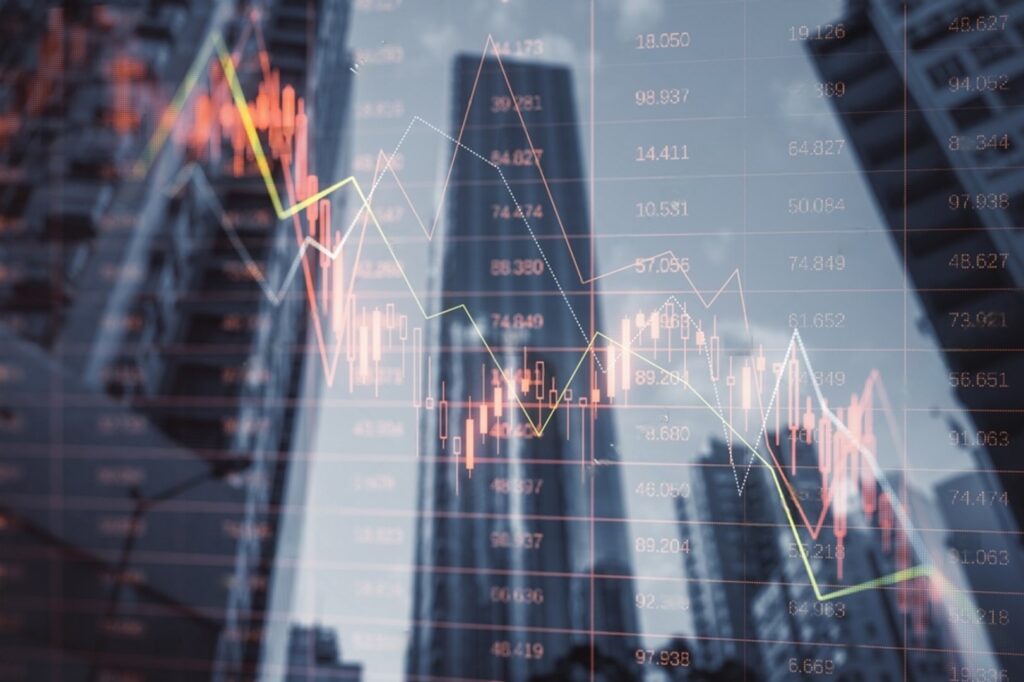
Have you ever wondered who truly controls the debt market? With trillions in circulation, the debt market is one of the most significant pillars of the global financial system. But who are the biggest players investing in this vast and intricate landscape?
The debt market is critical for funding governments, corporations, and financial institutions worldwide. Understanding the largest investors in this market sheds light on the mechanisms behind economic stability, financial policy, and investment trends.
The Global Debt Market: An Overview
The bond market, a crucial component of the global financial system, facilitates borrowing and investment for various entities. It allows governments and corporations to raise funds while providing investors with opportunities for stable returns. With a total value surpassing $133 trillion in 2022, this market has grown significantly over the past four decades.
Government bonds, corporate bonds, and financial institution securities make up the majority of debt instruments traded worldwide. Investors range from national banks to private institutions, each playing a distinct role in shaping the market’s direction.
The Largest Debt Markets in the World
United States: The Market Leader
The United States boasts the world’s largest debt market, with a total value exceeding $51 trillion. A substantial share of this comprises government bonds, valued at over $26 trillion, with annual interest payments reaching $534 billion in 2022.
Key investors in the U.S. debt market include:
- Commercial banks – Holding a significant share of U.S. government securities.
- Pension funds – Investing for long-term, stable returns.
- Investment firms – Seeking diversified portfolios through debt securities.
- Foreign governments – Countries like China and Japan hold large portions of U.S. Treasury bonds.
China: Expanding at a Rapid Pace
China’s bond market is the second-largest in the world, making up 16% of global debt transactions. The market has seen consistent annual growth of 13% over the past three years. However, ownership remains concentrated within local commercial banks, as foreign investment is limited due to government regulations and geopolitical factors.
Japan: A Unique Model of Debt Investment
Japan ranks third in the global debt market, with a defining feature: nearly 50% of its government bonds are owned by its central bank. This is a direct result of Japan’s monetary policies aimed at stabilising inflation and interest rates. The country’s financial strategy significantly influences global bond markets, as any policy adjustments affect investor sentiment worldwide.
France: Europe’s Largest Debt Market
With a bond market valued at $4.4 trillion, France stands as the largest debt market in Europe, surpassing the United Kingdom. French government bonds attract significant institutional investment, making them a stable component of the European financial system.
The United Kingdom: A Strong Financial Hub
The UK’s debt market, valued at approximately $4.25 trillion, plays a critical role in global finance. London remains one of the world’s leading financial hubs, with high investor participation from international banks, hedge funds, and pension funds.
The Key Players: Who Are the Largest Investors?
Banks: The Primary Debt Market Investors
Traditionally, commercial banks have been the most significant investors in government securities (G-secs), accounting for over 60% of transactions in wholesale debt markets. Banks prefer bonds due to their liquidity, regulatory requirements, and relatively stable returns compared to equities.
Banks’ involvement in the debt market includes:
- Holding government bonds as secure, interest-generating assets.
- Investing in corporate bonds for diversified revenue streams.
- Underwriting new bond issues, ensuring market stability.
Pension Funds: Long-Term Stability
Pension funds rely on bonds to secure predictable, long-term returns. These funds invest heavily in government and corporate debt, ensuring financial stability for retirees. Their influence extends across global markets, shaping bond demand and pricing.
Central Banks: Policy and Market Influence
Central banks play a dual role as both bond issuers and investors. They:
- Hold domestic and foreign government bonds to manage currency reserves.
- Use bond purchases as a tool for monetary policy.
- Adjust interest rates, impacting bond yields and market dynamics.
Private Investors and Investment Firms
While institutional investors dominate the debt market, private investors also participate through:
- Government and corporate bond ETFs.
- Fixed-income mutual funds.
- Direct bond purchases for portfolio diversification.
How Interest Rates Impact the Debt Market
Interest rates and bond prices have an inverse relationship—when interest rates rise, bond prices fall. Since 2022, global interest rate hikes have reduced bond values, impacting financial institutions and investment portfolios.
Banks, in particular, are sensitive to these fluctuations. In the U.S., banks hold $4.2 trillion in government bonds and securities, representing 24% of large banks’ total holdings. This exposure requires banks to continuously adjust investment strategies to mitigate risk.
The Ripple Effect on Investors
Rising interest rates not only impact banks but also influence pension funds and private investors. Fixed-income securities often become less attractive as newer bonds with higher yields emerge. As a result, investment strategies must continuously adapt to economic trends.
Key Trends Shaping the Future of Debt Investment
Green Bonds: The Rise of Sustainable Investing
Environmental, Social, and Governance (ESG) investing has spurred demand for green bonds, which fund climate-friendly projects. Investors are increasingly seeking sustainable financial instruments, driving innovation in the debt market.
Corporate Borrowing Amid Economic Uncertainty
Businesses continue to issue bonds as a primary method of financing, particularly in times of economic uncertainty. Companies issue both high-yield and investment-grade bonds, providing a spectrum of risk and return opportunities for investors.
Diversification Through Innovative Bond Products
New investment products such as inflation-linked bonds, asset-backed securities, and hybrid instruments provide investors with varied options for risk management and income generation.
Emerging Trends in Global Debt Markets
- The digitalisation of bond trading: Technology is streamlining bond issuance and secondary market trading.
- The impact of geopolitical tensions: Wars, trade disputes, and diplomatic shifts affect investor confidence and bond yields.
- Shifts in central bank policies: Interest rate cuts and hikes will continue to shape market sentiment.
- An increasing role of developing economies: Countries in Latin America and Africa are issuing more sovereign bonds, attracting new investors.
The Future of Debt Markets: What Lies Ahead?
As global financial markets evolve, several factors will shape the debt investment landscape:
- Geopolitical and economic conditions influencing investor confidence.
- Central bank policies on interest rates and inflation management.
- Corporate debt issuance as companies seek new financing opportunities.
- Sustainable finance gaining momentum through green and ethical bonds.
Conclusion
The debt market is a vast and complex financial ecosystem, with banks leading as the largest investors. Their dominance in government securities and corporate bonds influences financial stability and market dynamics worldwide.
As economic conditions shift and investment trends evolve, institutions and private investors alike must stay informed to navigate this ever-changing landscape. Whether through government bonds, corporate debt, or sustainable investing, the debt market will remain a key driver of global finance for years to come.



